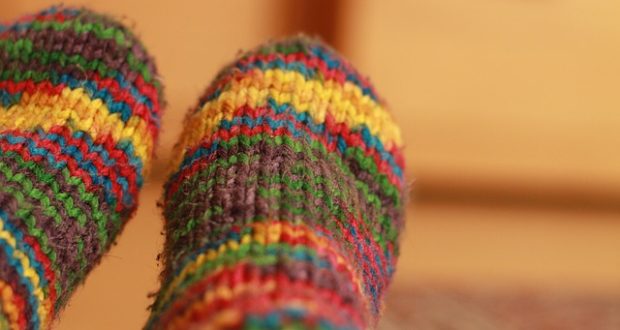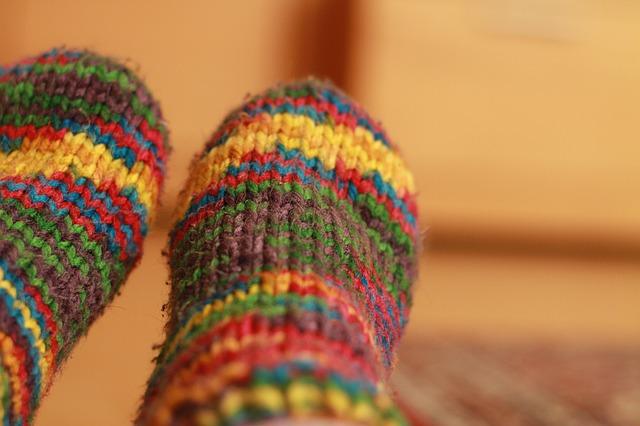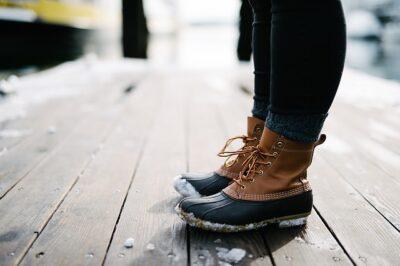In winter, and throughout the year, keeping warm is essential to your work. When you are comfortable from head to toe, you’ll be able to weather conditions longer and get more done.
But in extreme conditions it can be difficult to keep your feet warm. It takes a while for blood to circulate to your toes, and tight laces on shoes and boots only make your circulation worse. Warm socks and lined boots are essential, although they may not be enough in cold, wet weather. The solution: Felted wool insoles guarantee your comfort, protect your feet, and lengthen your working day.
Why Wool?
Wool is a readily available fiber with excellent properties for insulation and next-to-skin wear. It’s very durable; since each wool fiber is coiled, the fabric made from wool springs back quickly, retaining its shape and making it resist wear. It repels moisture, shedding water and drying quickly.
Most importantly, it keeps a layer of air next to your skin, insulating you from both heat and cold; heat is retained not in the fabric you wear but in the air trapped by that fabric, which is why airy wool knits are still warming. Each of these properties makes wool an excellent choice for an insole.
How to Make Felt
You may have had the experience of washing a wool garment and accidentally creating felt. Wool fibers have microscopic rough edges on them, allowing them to hook together like Velcro. Warm water and agitation makes the little hooks open up and the wool easily felts. You can make a sheet of felted wool by matting fibers together and felting using a special tool called a felting needle. An easier method, however, is to put 100 percent wool knit fabric into the washer and dryer. The stitches will mat together and create a piece of felt from which you can cut your insoles.
To create your felt, you will need a piece of knitted wool fabric that is at least twice as wide and as long as your foot. You may knit for felting, if you like. Choose thick 100 percent wool yarn that is not treated to be superwashed, as the superwash treatment is designed to prevent felting. If you don’t want to knit, your other option is to recycle a wool garment. If you are recycling, then choose a thick woolen and be prepared for unpredictability, unless you know for certain the wool in the garment will felt. Wash the knit in hot water with lots of agitation. If possible, put it in a spin dryer on high heat, as well. When you are finished, it will have shrunken and matted together so that you cannot identify individual stitches. If it isn’t felted enough, wash and dry it a second time.
Handheld Solar Generator Provides Emergency Back Up Power
Creating the Insoles
Once you have your felt, making insoles is simple. Stand on the fabric and outline your foot with chalk or marker, leaving a wider edge on your instep. You can also outline the bottom of the boots you want to line, or remove the existing insole and trace that for the best fit. Cut along your outline, taking care that the felt doesn’t snag on your scissors; very sharp scissors work best. When it is cut, you are ready to place them in your boots.
Try on the boots with the insole and feel if it is a good fit. Don’t rush this part; a comfortable and secure fit is key. If the insoles need trimming, remove them and cut a very small piece off of the edge, less than a quarter of an inch. Continue to adjust until the insoles fit snugly without bunching. When they are comfortable, you can wear them to warm your feet and keep them dry.
Wear and Care
Wash your wool insoles when necessary to clean sweat and dirt from them and make them last longer. To wash, soak them in warm water with soap, rather than detergent. Move it gently in the water so as not to cause fraying or additional felting. Don’t wring it out, but squeeze excess water out by hand and lay flat to dry. They will dry quickly in a well-ventilated area.
After you have enjoyed your wool insoles for several months, you may notice areas of wear. You can felt more wool directly on areas of wear using a felting needle. If the damage is quite bad, it might be more comfortable to make new insoles. Don’t be discouraged by wearing out wool insoles; keeping your feet warm saves far more time and energy than what is required to make new ones. If you’re very hard on your feet, make several pairs of insoles at once to reduce the repeated work.
With a bit of work, you will have insulating insoles protecting your feet from the cold ground and providing you with cushioning while you work. The difference in your comfort and resilience to the cold will be noticeable immediately, and that’s pretty valuable – especially given how little goes into creating the insoles. Once you try them, you’ll be hooked. Enjoy!


